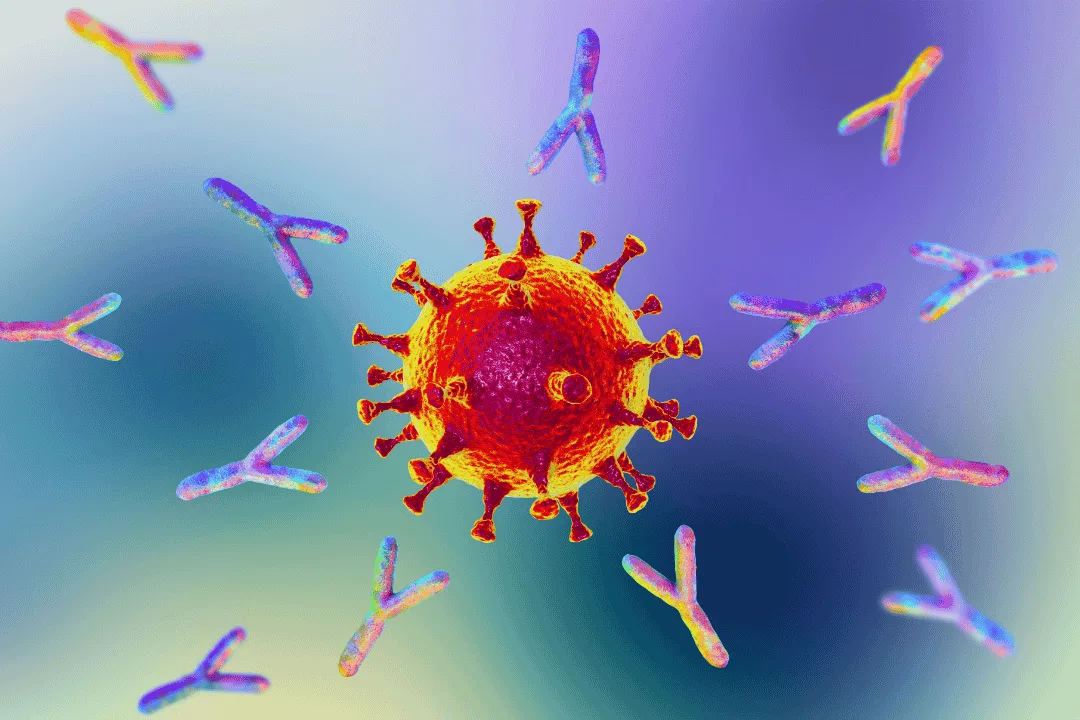The complexity of accurately predicting how antigens and antibodies bind together poses a significant challenge to effective therapeutic measures for COVID-19 and other diseases. Antibodies are like special keys that can unlock and neutralize dangerous pathogens. However, it can take a lot of time and work to figure out which antibodies work best against a certain virus.
Key Facts:
- The model was able to predict antibody and antigen bind with a 90% precision rate.
- The utilized model, AF2Complex, predicts binding of antibodies to the SARS-CoV-2 spike protein.
- The applications include vaccine improvement, different infectious disease treatments, as well as improvements in cancer immunotherapy.
A new study led by Mu Gao and Jeffrey Skolnick of the Georgia Institute of Technology and AgnistaBio has made considerable progress toward refining these predictions through the use of deep learning, an artificial intelligence method that learns by examining large amounts of data. This technology has been used to study the interactions of antibodies with the spike protein of the SARS-CoV-2 that causes COVID-19.
Perhaps the most astounding aspect of this work is how well deep learning can be leveraged for such challenging biological problems. Using B cell sequencing, Gao and Skolnick’s team found that their deep learning model accurately predicted antibody and viral antigen target interactions. In one instance, they predicted antibody binding from a pool of thousands of antibodies and achieved 90% precision. This is important as knowledge of which antibodies bind to what specific targets of the virus can be used to more rapidly advance vaccine and drug development.
AF2Complex is the AI model used by the researchers, and it is based on AlphaFold 2, which is an AI originally designed to predict the structure of a single protein. AF2Complex goes beyond that and predicts how different proteins interact with each other—for instance, how an antibody binds to a specific virus. The researchers applied their methodology in this study to antibodies that bind to the receptor-binding domain (RBD) of the SARS-CoV-2 spike protein, a target site that is critical to allow the virus to bind and enter into human cells. Using different methods of generating input data and evaluation methods, they were able to realize significant success in their predictions of the optimal antibodies with the desired capability to inactivate the virus.
To put it in layperson’s terms, we would want to identify what key will open a lock whilst avoiding an exhaustive process of testing each key one by one. Using this deep learning technique, they are able to build a virtual model of the lock and all the keys (i.e. the virus and antibodies) in order to predict which keys fit the best. That is infinitely faster than manually going through the process of trying every key combination, especially when there are literally thousands of possible permutations.
In all strategies and datasets, there was a wide variation in the success rate. Interestingly, the highest recall rates were observed when three separate strategies to choose input data were combined: one with a random set of antibodies, one with sequences from known SARS-CoV-2 binders, and one with standard protein sequence libraries. In particular, the joint method produced top-1 predictions that were correct 61% of the time. Although not ideal, these results are a significant improvement over past methods and highlight the advantages of multi-modal input into the deep learning models.
“The deep learning model could predict with high accuracy what antibodies would bind to the SARS-CoV-2 spike protein. This rapid and effective mechanism may pave the way for fast-development of more specific therapeutic antibody approaches,” Gao said. Essentially, by filtering down the best possibilities for viral neutralization, pharmaceutical researchers may concentrate their efforts on the most promising antibodies, thus accelerating the creation of viable medicines.
The challenges and limitations encountered through this study were also interesting. Antibody-antigen interactions for proteins such as SARS-CoV-2 will be more complex to predict than other protein interactions because there will not be many similar sequences in nature. Antibodies are unique, unlike most proteins, for which the databases are full of close relatives that can easily be aligned. People respond to the same infection by producing unique antibodies, so there is not always a wealth of previous data. In the case of the researchers, they partially circumvented this limitation by pooling sequences from antibodies that bind to the same antigen, which greatly increased the effectiveness of this approach.
The consequences of this finding extended beyond COVID-19. The technique might be used to other infectious diseases, especially ones that are difficult to produce vaccines for. Imagine being able to detect antibodies for quickly evolving viruses or create therapies for influenza or the next pandemic virus before they become a serious problem. Future-proofing our infectious disease defenses may need deep learning and antibody prediction.
It may also have potential in cancer immunotherapy. Several existing cancer therapies involve identical proteins, which have been engineered into antibodies that specifically bind to the target protein that is likely present on the surface of the malignant cell. This deep learning approach could make the design of these antibodies and ensure they will bind to their target all the more straightforward. Such monoclonal antibodies could then be utilized more effectively with reduced side effects, due to the improved ability.
Gao and Skolnick’s work is just one of a growing number of studies that pivot to artificial intelligence as a pathway toward answering urgent biological questions. Artificial intelligence has already demonstrated its superiority to humans in specific categories of medical diagnoses, and now it’s making its way into treatment as well. So, a major benefit of artificial intelligence in this instance is that it can comb through enormous datasets, such as all the conceivable variations of antibodies, and identify those most likely to succeed far more quickly than human researchers could ever go through the same process.
They foresee a day when it becomes far easier to target potential antibodies, when researchers simply input the genetics of a specific virus and an AI predicts likely effective antibody candidates in hours instead of weeks or months. As new viral threats emerge every few years, Jeffrey Skolnick said, “Now, the field of AI is moving so quickly in the direction of structural biology that we are closer than ever to a time when a system could predict an immune response faster than a new viral threat can emerge.” These developments might revolutionize how we respond to and prepare for infectious diseases and create a health system that is more agile to respond to the need for care.
For more, visit — https://doi.org/10.1073/pnas.2410529121#supplementary-materials



